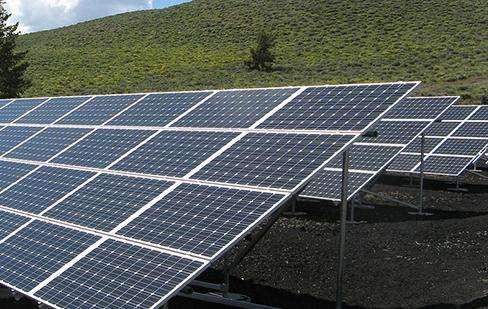Lithium batteries and solar cells cannot be added to new energy vehicles.
New energy vehicles cannot be equipped with batteries. Nowadays, most electric cars are modified from the chassis of traditional cars. The space layout and internal design significantly limited the installation of additional batteries. If the batteries are placed in the trunk, the space in the trunk will be reduced. the car roof will leak if not handled properly.
A car refers to a car used to transport people and their belongings, with seats arranged between two axles.
Not good
1. Low conversion rate, insufficient power
The most advanced gallium arsenide thin film power generation technology, thousands of times direct lightfrom the sun, ideal conversion rate 31.6%, the actual conversion rate is only about 20%. Assuming that the car solar panel covers an area of 6 square meters, the weather is sunny, the solar power is 1 kW/square meter, and the solar exposure time is 5 hours, about 6 degrees of electricity can be obtained. Currently, electric vehicles consume 15 kilowatt hours of electricity per 100 kilometers. You can run up to 40 kilometers per day.
This is calculated to the highest standards. Half of the actual irradiation area of the solar panel is good. In addition to the dark clouds passing in the sky, half of the irradiation energy is about the same. If you lower the conversion rate, the data is less than 10 kilometers. Clearly undernourished.
2. High cost and low performance/price ratio
Thin film solar cells have a power of'about 175 W per square meter, a weight of 3.5 kg and a price of 1,395 RMB. The entire vehicle costs 8,370 yuan based on 6 square meters. At the same time, the weight of the vehicle will be increased by at least 21 kg. It's a 10 kilometer journey every day. It's not as good as buying a few lithium batteries, but the price/performance ratio is really low.
3. High maintenance costs, affecting vehicle safety.
GaAs batteries have the characteristics of plasticity, long life and repairability. But today, the cost of production is high and it is difficult to popularize it. Bumps and bruises on cars are inevitable, and solar panel repairs are expensive. If post-installation maintenance is not in place, it may easily fall off, affecting the driving safety of the car.
4. Invisible pollution, gallium is a heavy metal
Solar energy itself is pollution-freetion, and the power generation process of the gallium arsenide thin film power generation panels used is also pollution. -free. Finished gallium arsenide is also non-toxic, but the arsenic it contains during the synthesis process is highly toxic and gallium is also a heavy metal. Being so close every day, invisible pollution has no way of hiding. There is no plan to recycle damaged solar panels, which inevitably leads to pollution.














